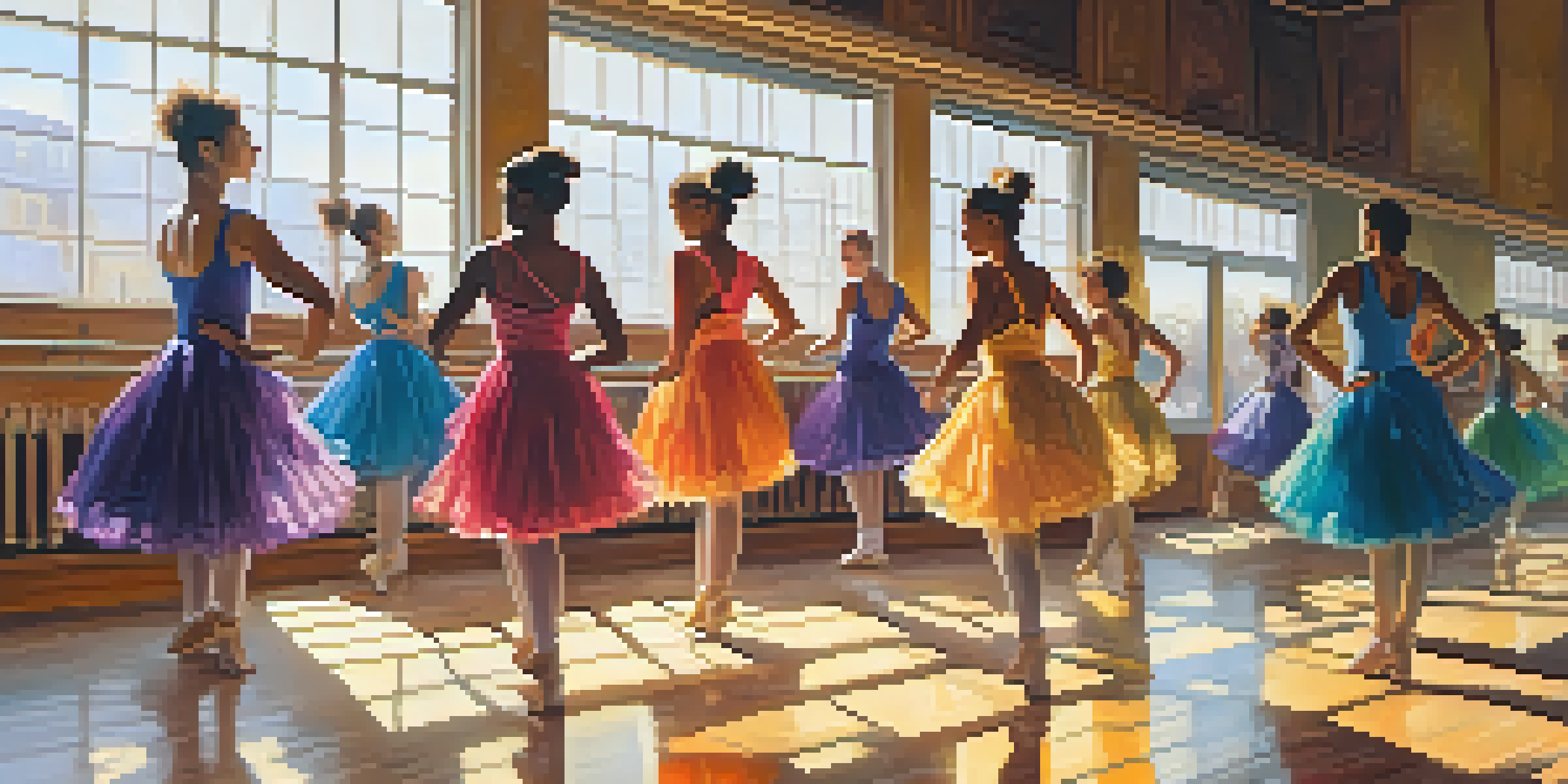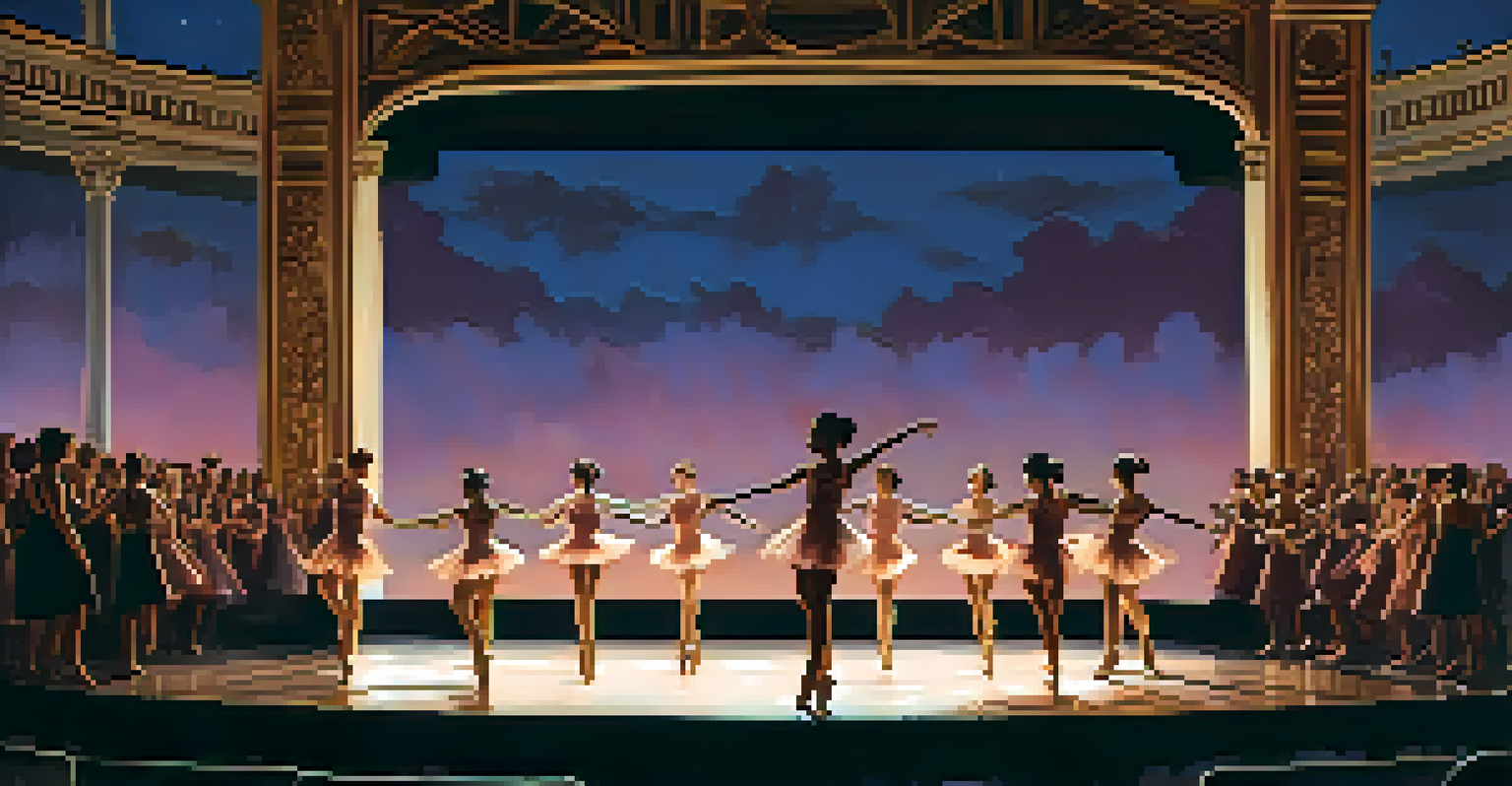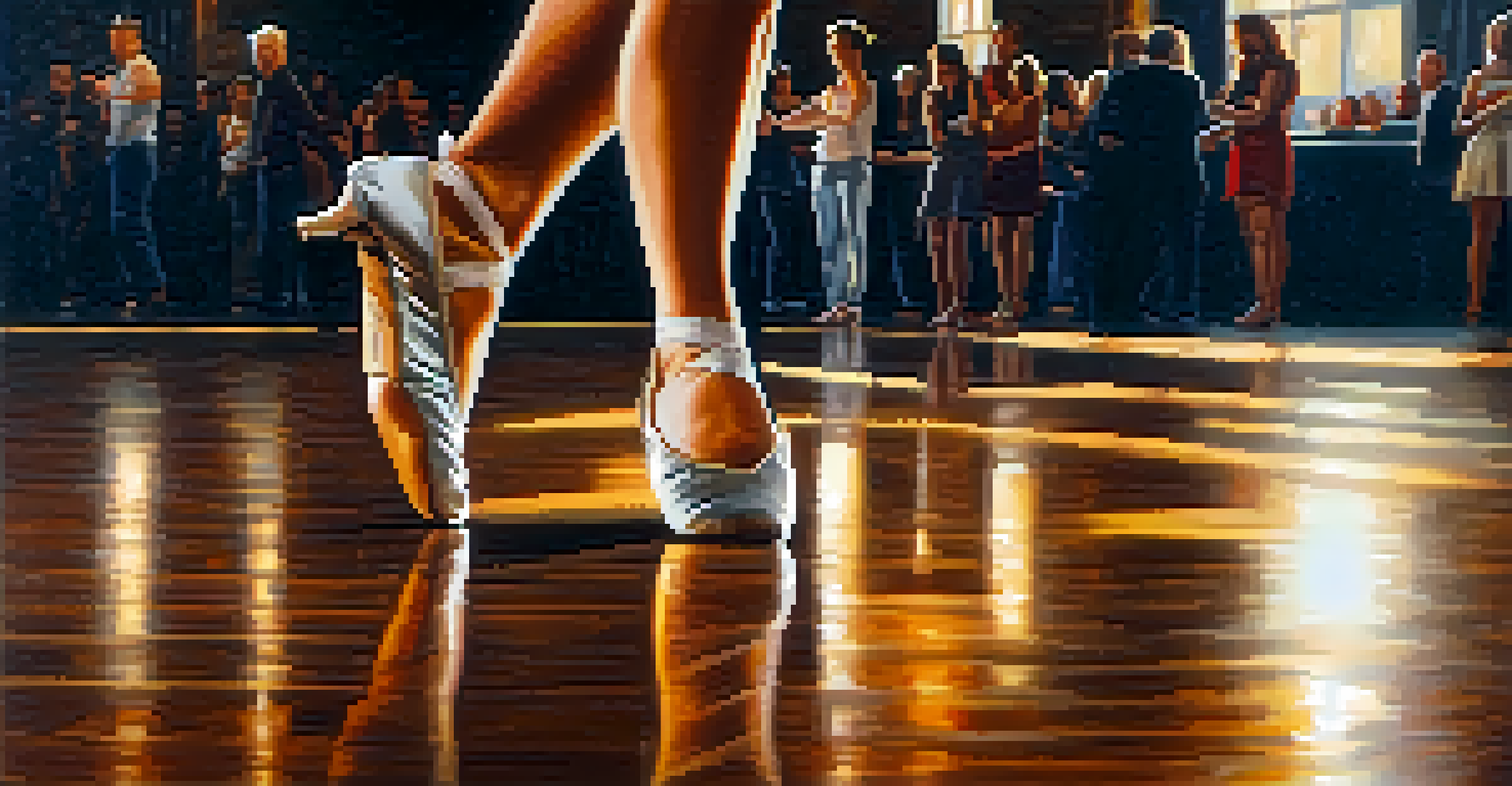The Role of Music in Enhancing Dance Collaboration Performance

Understanding the Connection Between Music and Dance
Music and dance have shared a symbiotic relationship for centuries, each enhancing the other. At its core, dance often expresses emotions or narratives through movement, while music serves as the emotional backdrop. When these two art forms come together, they create a powerful medium that resonates with audiences and performers alike.
Dance is the hidden language of the soul.
The rhythm of music can dictate the pace of a dance, guiding the dancers’ movements and allowing for a seamless connection between beats and steps. Think of it as a conversation where music sets the tone, and dancers respond with their bodies, creating a dynamic dialogue that captivates viewers.
This interplay is not just about following the beat; it’s about interpreting the music’s nuances and translating them into movement. Whether it’s a gentle waltz or an energetic hip-hop routine, the way dancers engage with the music can transform a performance into an unforgettable experience.
Music as a Tool for Enhancing Collaboration
Collaboration in dance often involves multiple dancers working together to create a cohesive performance. Music acts as a unifying force, helping dancers synchronize their movements and establish a shared rhythm. When everyone is in tune with the music, it fosters a deeper connection among the performers.

For example, in a group choreography session, the selected track can inspire specific movements, encouraging dancers to contribute their unique interpretations. This not only enhances creativity but also allows dancers to feel more connected to each other and the music, ultimately resulting in a more fluid performance.
Music Enhances Dance Expressions
The interplay between music and dance allows performers to express emotions and narratives, creating a captivating experience.
Furthermore, the emotional impact of music can elevate the collaborative experience. When dancers feel the music, they can express their emotions more authentically, which enhances the overall synergy of the group. This emotional connection can transform a standard performance into a breathtaking showcase of unity.
The Influence of Music Genres on Dance Styles
Different music genres evoke distinct emotions and movements, influencing the style of dance that emerges from them. For instance, classical music often inspires ballet, with its structured melodies and graceful movements. In contrast, the spontaneity of jazz or hip-hop allows for more improvisation and personal expression.
Music can change the world because it can change people.
Dancers often choose music that resonates with their personal style or the message they want to convey, which can result in a beautiful fusion of genres. This blending not only showcases the versatility of dance but also demonstrates how music can expand the boundaries of traditional styles.
Moreover, understanding the nuances of various music genres can help dancers adapt their movements accordingly. A dancer performing to a fast-paced electronic track will likely employ sharper, more energetic movements compared to the fluidity required for a slow, melancholic piece.
How Music Shapes Audience Perception of Dance
The choice of music significantly impacts how audiences perceive a dance performance. A powerful, evocative score can elevate a performance from merely a display of skill to an emotional experience. Audiences are often moved by the combination of music and movement, which can evoke feelings of joy, sadness, or nostalgia.
Consider a dramatic contemporary piece paired with haunting music; the emotional weight of the score can amplify the dancers’ expressions, drawing the audience deeper into the narrative. It’s as if the music helps narrate the story, guiding viewers through the emotional highs and lows of the performance.
Collaboration Through Shared Rhythm
Music acts as a unifying force in dance, helping performers synchronize their movements and fostering deeper connections.
Conversely, a lively, upbeat track can create a sense of excitement and joy, prompting laughter and applause from the audience. This connection between music and audience perception underscores the importance of selecting the right soundtrack to complement the choreography.
Creating a Cohesive Performance through Music
For any dance collaboration, establishing a cohesive performance is essential, and music plays a pivotal role in this process. A well-chosen piece can serve as the backbone of a performance, knitting together various movements and styles into a unified whole. This cohesion not only captivates the audience but also enhances the performers’ experience.
Dancers often rehearse together to the same music, allowing them to synchronize their movements and discover how they can interact with one another. This not only helps in timing but also fosters a sense of teamwork, as everyone works towards a common goal—creating a memorable performance.
In dance competitions, for example, a cohesive routine often stands out because of its seamless flow and synergy. When dancers are in sync with each other and the music, it creates a visually stunning experience that resonates with judges and audiences alike.
The Role of Improvisation in Dance and Music
Improvisation is an essential aspect of both music and dance, allowing performers to express their creativity spontaneously. In collaborative dance performances, musicians and dancers often engage in a dialogue, where the music inspires movement while the dancers respond with on-the-spot creativity. This fluid interaction can lead to unexpected and exciting moments.
For instance, during a live performance, a musician might change the tempo or introduce a new melody, prompting dancers to adapt their movements in real time. This spontaneity can result in a unique performance that showcases the artistic talents of both dancers and musicians, creating a shared experience that feels fresh and alive.
Genres Influence Dance Styles
Different music genres evoke distinct emotions, shaping the dance styles that emerge and allowing for creative fusions.
Moreover, improvisation encourages dancers to trust their instincts, fostering a greater sense of freedom. When dancers feel liberated to express themselves in the moment, it often leads to more passionate and authentic performances, enhancing the overall impact on the audience.
The Future of Music and Dance Collaboration
As technology continues to evolve, the collaboration between music and dance is also transforming. From virtual reality performances to innovative soundscapes, the possibilities for integrating music into dance are expanding. Dancers and musicians are exploring new ways to create immersive experiences that engage audiences on multiple sensory levels.
For example, advancements in sound technology allow for interactive performances where the music changes based on the dancers’ movements. This not only creates a unique experience for the audience but also pushes the boundaries of creativity and collaboration.

Looking ahead, the fusion of music and dance will likely continue to evolve, with artists from various backgrounds coming together to experiment and innovate. This evolution will pave the way for new genres, styles, and performances that challenge traditional norms and captivate audiences worldwide.